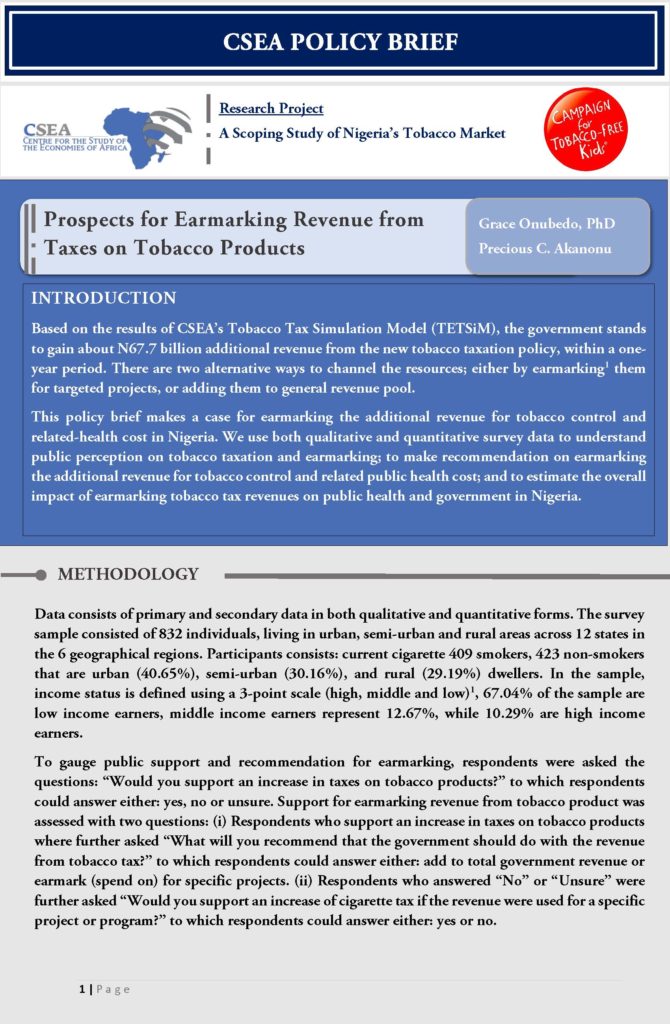Based on the results of CSEA’s Tobacco Tax Simulation Model (TETSiM), the government stands to gain about N67.7 billion additional revenue from the new tobacco taxation policy, within a one-year period. There are two alternative ways to channel the resources; either by earmarking[1] them for targeted projects, or adding them to the general revenue pool.
Policy Brief & Alerts

January 25, 2019
Prospects for Earmarking Revenue from Tobacco Taxes
Based on the results of CSEA’s Tobacco Tax Simulation Model (TETSiM), the government stands to gain about N67.7 billion additional revenue from the new tobacco taxation policy, within a one-year period. There are two alternative ways to channel the resources; either by earmarking[1] them for targeted projects, or adding them to the general revenue pool.
Read →
Related
A Review Of Nigerias 2016 Budget
This study
reviews and assesses the 2016
budget of the Federal Republic of Nigeria in line with IMFsbudget assessment indicators, namely: comprehensiveness, transparency, and
realism. The assessment is based on
clear understanding of the present
administrations objectives, which are: to achieve socio-economic
and infrastructural development, to diversify the Nigerian economy, and to
achieve improved security of lives and properties.


